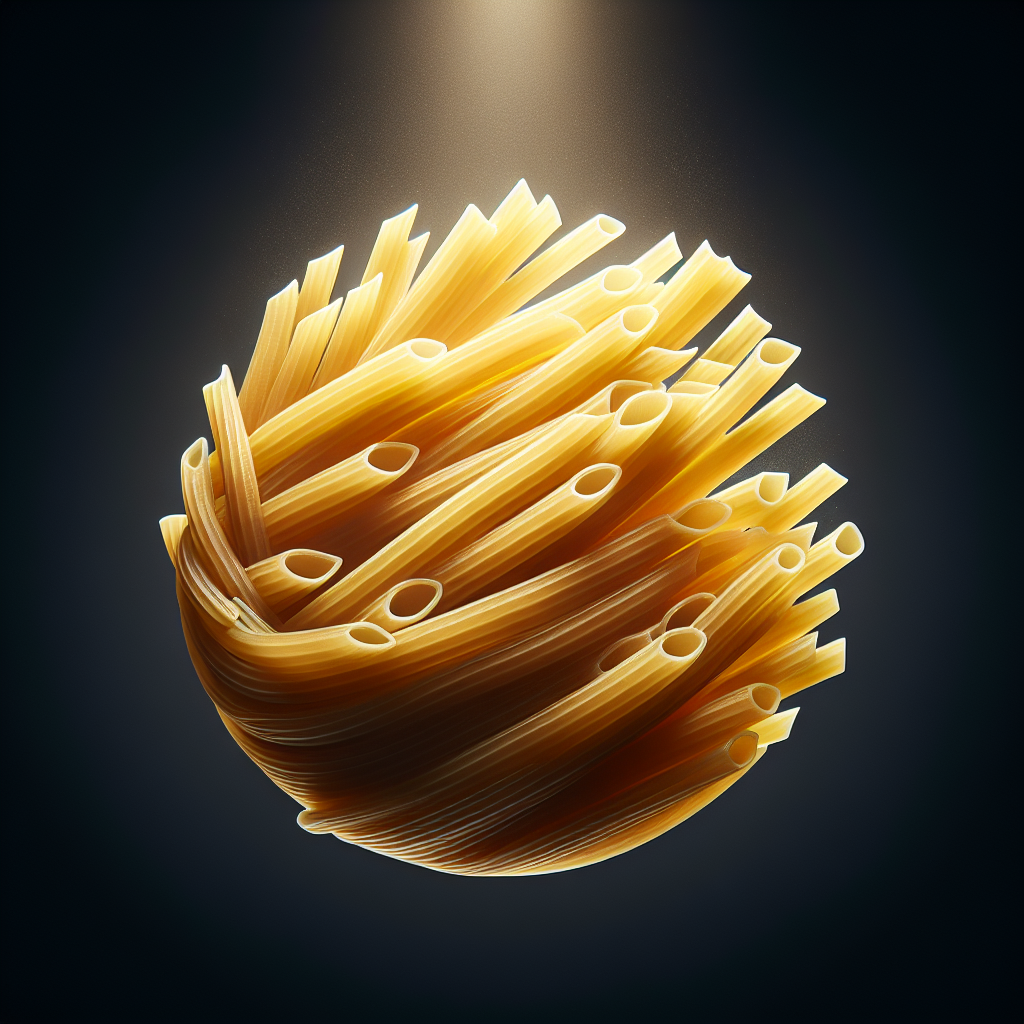Are you tired of cooking pasta that turns out either too mushy or undercooked? Look no further! In this article, we will delve into the fascinating world of pasta cookers, exploring the different types available and how they can make your cooking experience more efficient. Whether you prefer an electric cooker, stovetop version, or even a microwave option, we will guide you through the various features and benefits of each. By the end, you’ll be equipped with the knowledge to choose the perfect pasta cooker to elevate your culinary endeavors. So, let’s dive in and discover the science behind these essential kitchen tools!

Types of Pasta Cookers
When it comes to cooking pasta, having the right pasta cooker can make all the difference. There are several types of pasta cookers available, each with its own unique features and advantages. Whether you prefer to cook your pasta on the stovetop, with an electric cooker, or in the microwave, there is a pasta cooker out there that will suit your needs perfectly.
Stovetop Pasta Cookers
Stovetop pasta cookers are a classic and reliable option for cooking pasta. They come in a variety of styles and designs, each offering its own benefits.
Traditional Pasta Pots
Traditional pasta pots are the most basic type of stovetop pasta cooker. They feature a large pot with a lid and handles for easy transport. These pots are perfect for cooking large batches of pasta and come in a range of sizes to accommodate different serving sizes.
Pasta Inserts
Pasta inserts are a convenient option for stovetop pasta cooking. These inserts sit inside a regular pot and have small holes or perforations that allow water to circulate freely. This ensures that your pasta cooks evenly and prevents it from sticking together. Pasta inserts are easy to use and can be removed from the pot with ease once your pasta is cooked.
Pasta Cookers with Strainer Lids
Pasta cookers with strainer lids are a great option for those who want to streamline their cooking process. These cookers feature a built-in strainer in the lid, allowing you to easily drain the water once your pasta is cooked. This eliminates the need for a separate strainer and makes cleanup a breeze.
Multi-Purpose Stovetop Cookers
If you’re looking for a versatile pasta cooker, consider a multi-purpose stovetop cooker. These cookers often come with additional features such as steamer inserts or saucepan attachments, allowing you to cook multiple dishes simultaneously. They are a great space-saving option for those with smaller kitchens.
Electric Pasta Cookers
Electric pasta cookers are a convenient and efficient option for cooking pasta. These cookers eliminate the need to use the stovetop and offer a range of features to make cooking pasta a breeze.
Automatic Pasta Cookers
Automatic pasta cookers take the guesswork out of cooking pasta. These cookers have pre-set cooking programs that automatically calculate the cooking time and water temperature for different types of pasta. Simply add your pasta, select the desired program, and let the cooker do the rest. This ensures perfectly cooked pasta every time.
Pasta Cookers with Built-in Strainers
Similar to stovetop cookers with strainer lids, electric pasta cookers with built-in strainers make draining your pasta a breeze. These cookers have a built-in strainer basket that lifts out of the cooker, allowing you to easily remove your pasta without the need for a separate strainer.
Multi-Function Electric Cookers
If you’re looking for a versatile kitchen appliance, consider a multi-function electric cooker. These cookers often have multiple cooking modes, allowing you to not only cook pasta but also steam vegetables, cook rice, and even sauté or simmer sauces. This makes them a great investment for those who want a versatile cooking tool.
Microwave Pasta Cookers
Microwave pasta cookers are a quick and convenient option for those who want to cook pasta in a hurry. These cookers are specifically designed to be used in the microwave and offer a range of features to ensure perfectly cooked pasta.
Microwave Pasta Pots
Microwave pasta pots are simple yet effective pasta cookers for the microwave. They consist of a lidded pot with a vented lid, allowing steam to escape while the pasta cooks. These pots are generally made from microwave-safe materials and come in various sizes to accommodate different portion sizes.
Microwave Pasta Cookers with Strainers
For easy straining, consider a microwave pasta cooker with a built-in strainer. These cookers have a strainer insert that allows you to easily drain the water from your pasta without the need for a separate strainer. This saves time and eliminates the need for additional dishes.
Microwave Pasta Cookers with Measuring Inserts
If you want to ensure accurate pasta portions, consider a microwave pasta cooker with a built-in measuring insert. These cookers have a measuring insert that allows you to measure out the perfect amount of pasta for your desired serving size. This eliminates the need for guesswork and helps prevent overcooking or undercooking.

Efficiency of Pasta Cookers
When choosing a pasta cooker, it’s important to consider not only the cooking performance but also the overall efficiency of the cooker. Here are some factors to consider when evaluating the efficiency of pasta cookers.
Cooking Time
The cooking time of a pasta cooker can vary depending on the type and model. Let’s take a closer look at the cooking time of stovetop, electric, and microwave pasta cookers.
Stovetop Pasta Cookers
Stovetop pasta cookers generally have a longer cooking time compared to electric or microwave cookers. The time it takes to bring the water to a boil and cook the pasta will depend on the size of the pot and the heat source. However, most stovetop cookers can cook pasta within 8-12 minutes, depending on the type of pasta.
Electric Pasta Cookers
Electric pasta cookers are known for their quick cooking times. Thanks to their built-in heating elements, these cookers can bring the water to a boil rapidly. Electric pasta cookers can cook pasta in as little as 5-7 minutes, depending on the model and type of pasta.
Microwave Pasta Cookers
Microwave pasta cookers offer the fastest cooking times. As microwave ovens use electromagnetic waves to heat the water, the cooking time is significantly reduced. Most microwave pasta cookers can cook pasta within 3-5 minutes, making them the quickest option for those in a hurry.
Energy Consumption
When it comes to energy consumption, there are variations among different types of pasta cookers. Let’s explore the energy consumption of stovetop, electric, and microwave pasta cookers.
Stovetop Pasta Cookers
Stovetop pasta cookers rely on gas or electric stovetops for heating, which can vary in energy efficiency. Gas stovetops tend to be more energy-efficient compared to electric stovetops. However, the overall energy consumption will depend on the size of the pot, the length of time it takes to cook the pasta, and other factors such as insulation.
Electric Pasta Cookers
Electric pasta cookers have built-in heating elements that require electricity to operate. The energy consumption of electric cookers will depend on their wattage rating and the duration of use. However, due to their quick cooking times, electric pasta cookers tend to be energy-efficient compared to stovetop cookers.
Microwave Pasta Cookers
Microwave pasta cookers provide an energy-efficient cooking method. Microwaves use less energy compared to stovetops or electric cookers. Since microwave pasta cookers have shorter cooking times, they typically consume less energy overall.
Water Saving Features
Efficiency extends beyond cooking time and energy consumption – it also includes water usage. Here’s how stovetop, electric, and microwave pasta cookers compare in terms of water-saving features.
Stovetop Pasta Cookers
Stovetop pasta cookers generally require a large amount of water to ensure that the pasta is fully submerged while cooking. While this might not be the most water-efficient method, some stovetop cookers come with built-in water level indicators, allowing you to add just the right amount of water to avoid excessive waste.
Electric Pasta Cookers
Electric pasta cookers typically have a minimum and maximum water level indicator, ensuring that you add the appropriate amount of water for your pasta. This helps prevent water waste and ensures that your pasta cooks evenly.
Microwave Pasta Cookers
Microwave pasta cookers often require less water compared to stovetop or electric cookers. Since the cooking process relies on the steam created within the cooker, less water is needed. This makes microwave pasta cookers a more water-efficient option.
Ease of Use and Cleaning
When it comes to the overall efficiency of a pasta cooker, ease of use and cleaning are important factors to consider. Let’s take a look at how stovetop, electric, and microwave pasta cookers compare in terms of ease of use and cleaning.
Stovetop Pasta Cookers
Stovetop pasta cookers are generally easy to use, requiring you to heat the water and cook the pasta. However, they may require additional steps such as draining the pasta using a separate strainer. When it comes to cleaning, stovetop cookers can be a bit more time-consuming as you’ll need to wash both the pot and the strainer separately.
Electric Pasta Cookers
Electric pasta cookers are designed to be user-friendly. Most models feature programmable controls that allow for precise cooking times and temperatures. Additionally, many electric cookers have non-stick surfaces, making cleanup a breeze. The cooking pot and built-in strainer are often dishwasher-safe, further simplifying the cleaning process.
Microwave Pasta Cookers
Microwave pasta cookers offer unparalleled convenience and ease of use. Simply add the pasta, water, and any desired seasonings to the cooker, and pop it in the microwave. Since microwave pasta cookers are typically made from microwave-safe materials, they are easy to clean and can often be placed in the dishwasher.
Versatility of Use
The versatility of a pasta cooker can greatly impact its overall efficiency. Here’s how stovetop, electric, and microwave pasta cookers fare in terms of versatility.
Stovetop Pasta Cookers
Stovetop pasta cookers are primarily designed for cooking pasta but can also be used for other purposes such as boiling eggs or making soups and stews. However, their versatility is somewhat limited compared to electric or microwave cookers.
Electric Pasta Cookers
Electric pasta cookers often offer a range of additional cooking functions, making them highly versatile. Some models can be used as rice cookers, steamers, or saucepans, allowing you to prepare a variety of dishes with ease.
Microwave Pasta Cookers
Microwave pasta cookers are primarily designed for cooking pasta, but their compact size and microwave-safe materials make them useful for reheating leftovers or steaming vegetables. While they may not offer as many functions as electric cookers, they provide versatility within the realm of microwave cooking.
In conclusion, there are several types of pasta cookers to choose from, each with its own unique features and advantages. Whether you prefer the traditional stovetop method, the convenience of an electric cooker, or the quick cooking times of a microwave cooker, there is a pasta cooker out there that will suit your needs perfectly. Consider factors such as cooking time, energy consumption, water-saving features, ease of use and cleaning, and versatility of use when selecting the right pasta cooker for you. With the right pasta cooker, you can enjoy perfectly cooked pasta every time and elevate your culinary experience.


